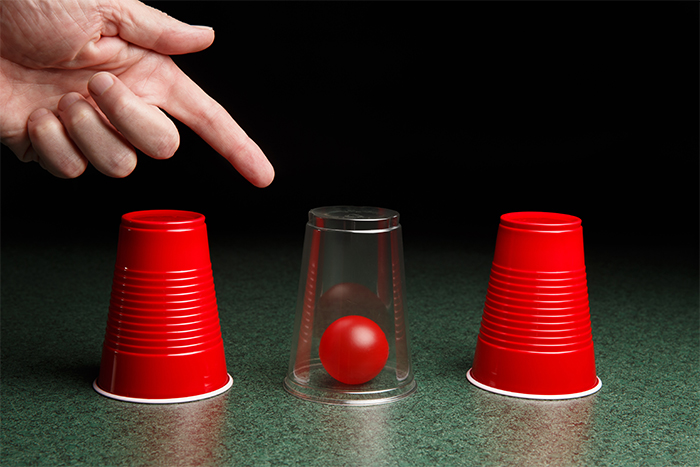If you’ve been reading this series on Qualifying Donors, you now have gone through the mind-bending exercise of creating a caseload pool. Now you can begin qualifying donors for your caseload.
At this point it is important to remember why you are doing this. Just because a donor has given you a large gift does not mean that she wants to relate to you personally. That is why you need to try to connect with each donor on your caseload pool, from the highest value donor (confluence of recency, amount, capacity and relationship) to the lowest, to determine if the donor wants to have a relationship with you. There is no point in having a donor on a caseload who does not want to relate more personally to you.
I know that is post is quite a bit longer than we usually publish. But the qualifying process is complex, which is why I need to take the time and space to explain it to you. Our newly updated (free) white paper includes a more detailed explanation of the process. Just click here to request it.
For now, I am going to walk you through a process Veritus Group uses to qualify donors. It is fairly labor-intensive, which means it will take months to complete. In fact, if you can qualify 5 donors per week it will take approximately 7.5 to 8 months for you to have a fully qualified caseload, starting from scratch. But once you have it in place, your work will be so much more effective, efficient and enjoyable.
By the way, Jeff and I are currently working with another company to add an online, social media, website element to this qualifying process that we anticipate will speed up the qualifying process. More on that when it becomes available.
So here are the steps we use to qualify donors:
- Take your caseload pool and sort it into priority order, the highest value donor (confluence of recency, amount, capacity and relationship) at the top, down to the lowest value at the bottom. The purpose of this sort is to contact the higher-value donors first. You will need to segment these donors into groups of 10-15 and put no more than that many through the process at a time. Here’s why. You are going to be calling all of them, and you do not want your letter to a donor to get “cold” because you have sent out more letters than you can call in a timely fashion. You are pacing yourself, and your pace may be more or less than 10 a week.
- Discipline yourself to send an introductory letter to the first group of 10 caseload pool donors once a week. The purpose of the letter is to have the President/CEO/Executive Director introduce you to the donor and let them know that (a) you are his/her chosen representative to work with the donor and help them in any way they want, and (b) you will be contacting them in the next few days. If all you have is the donor’s email, then do this step via email, enclosing the letter as an attachment to the email and asking the donor to respond affirmatively with contact information. If no email or phone is available, the letter should reflect that “unfortunately, we do not have your contact info.” In this case, include a postcard for them to return with phone and email information.
- In preparation for the donor call, you will need to do an online search to learn anything you can about the donor in addition to what is already in the database, file notes and in the minds of people in your organization that may know the donor. This also helps you locate phone numbers if they are not listed in the record. The letter states that you will be ‘contacting’ them the following week. Also, if your database includes capacity information, you should study that as well. The point of this step is to be fully prepared with as much information as possible.
- A week after the letter goes out, make a qualifying phone call. Be sure to manage the distance between the assumed in-home date of your letter and when you are making the call. Do not let too much time pass, as the letter will get “cold.” The phone call has three objectives: (1) to introduce yourself as an investment counselor and helper, NOT a fundraiser; (2) to say ‘thank you’ for supporting the organization; and (3) to determine if the donor has interest in relating to you in a more personal way. On this last point there is a delicate nuance. You can’t just come out and say: “do you want to relate to me?” No. What you are trying to do in the phone call (or on email if you are limited to talking just on email) is to get a sense of whether the donor wants to engage in some sort of conversation and relationship. If the donor is cool and eager to get off the phone, then you have your answer – unless you perceive a special circumstance at play like you are calling at the wrong time, etc. The point is that you will perceive a degree of warmth and interest, or coolness and disinterest. And that is your data point – the one you will use to add the donor to your qualified caseload. I think that once you get into this, you will train yourself to perceive when to add a donor to your caseload. You will be able to tell. Oh, one other point on the phone call –if you don’t connect immediately, keep trying. Don’t just try once and then move on. You could also leave a message expressing your intent and assuring the donor that your call is not a fundraising call, and affirming your intent. If the phone doesn’t work, then try email.
- Use the point of contact to secure more information. When you are talking to or writing the donor you will always need to keep in mind that your primary objective is to uncover the interests and passions of the donors. “Mrs. Reynolds, you have said you love to support X here at [name of org]. Would you mind telling me why?” And you carefully and kindly probe to secure those interests. You will also want to know the communication preferences of the donor. Do they want to relate by phone? A visit? On email? Or a combination? We will be getting into all of this in great detail in our Major Gift Academy, so you can learn all the ways to secure information. A secondary objective on the call is to build relationship and trust. And for that you will be soliciting how you can help the donor in her relationship to the organization. “Do you need any more information? Are they any concerns you have?” Etc. And you will share your personal contact information and tell the donor she is welcome to contact you any time with any concern or request she has.
- Touch Point and Personal Note. On the surface, this may not seem to be a relevant action as it relates to qualifying the donor. But in fact it is, because it shows the donor that you are wanting to connect and affirm the donor in his giving. This touch point is something that you send via mail or email that connects your donor to the impact of his giving in a real way. There are many ways to do this. Some common Touch Points may include an annual report, program update, thank you from program participants, a recipient story with a picture, note from someone helped, and more. This does not have to be complex, or a multi-page Adobe creation. Simple but impactful is good. Send them a story or update on that program with a personal note from you. This is a way to build connection to your organization, so they will begin to trust you as their contact.
- If the donor does not respond to letters or calls, then the next step is to send a survey. The purpose of the survey is essentially to perform the function of the phone call – to secure information on passions and interests, as well as communication preference. The responses to the survey, though few, will be a wealth of information; most donors who respond should be considered qualified. This opens the door for the relationship. Marketing studies show that it can take an average of seven touches before a consumer will purchase a product. Applying that to the Major Gifts world, we have found that it can take several attempts to connect with donors. Some will become qualified from the initial letter or the follow-up phone call. Others will require more contact before they connect with you. For some top donors, we recommend trying one more Touch Point here.
- Phone Call & Final Letter. We suggest two final attempts to try to reach the caseload pool donor. First, attempt another call to follow up on the survey. This call will be similar to the Introductory Phone call, in which you’ll be asking if the survey has been received, and initiating a conversation. Finally, it makes sense to send non-responders a handwritten note, explaining that you appreciate the donor’s support and would like to gather information about her communication preferences. Saying something like, “Having not heard from you, I will continue to communicate with you every so often so that you have access to information about how your giving is making a difference in the lives those we serve.”
- If after many attempts you are unable to connect with the donor, the lack of connection should be interpreted as the donor’s response. In these cases, make a decision not to pursue the donor, and move on. Be careful on this point to be sure the donor is not on vacation or out of the country or ill, or there is some other reason you have not been able to connect. Some MGOs put the highest value donors on a list to try the process again a month later, rather than just give up. You will discover your own system for doing this as you get into it.
- If, during the qualification process, any donor on the caseload pool gives a donation, an alert should go to the MGO that day, and the MGO picks up the phone and calls the donor to thank her. This happens regardless of whether the donor has received the intro letter or is actively in the qualifying process. The point is to take advantage of the donation to immediately contact the donor and go through the process.
So that is the general description of the process. There is a lot more detail that I don’t have the space to develop here, but I think you get the idea of what qualifying means. Jeff and I suggest you take the outline of the strategy I have shared with you here and create your own version of a qualifying system.
Lastly, here are some points to remember when you are contacting your donors:
- Think of the donor as a friend, and communicate with them in that manner. If you are dealing with someone you really like, be intuitive and go with the flow – don’t be formulaic. Go with that style.
- Pay attention to what is happening in the relationship – the clues, etc. – so that you know what to do next. Don’t think in terms of the “shoulds” of major gift fundraising, even things you have learned. You are now in a warm, friendly relationship. Listen to the cadence of that relationship. Look for the logical next point of what the donor is saying to you. Analyze: if they said this, then the logical next step is that. Spend more time listening for clues and entry points than running the formula through your head.
- Ask questions not only to get information, but to lead the conversation toward gaining a commitment. Questions like:
- So why are you interested in [stated interest]?
- Has that interest led you to take any actions to deal with the problem?
- What do you think can be done to solve the problem?
- Prior to each call or contact:
- Remind yourself that each one of your donors is unique in what he or she seeks from the giving relationship. Think about this before you call – get it in your mind.
- Remind yourself of the best possible outcome and the least acceptable outcome. In other words, decide where you want to go if it turns out really well, and decide (in advance) what is the least of what you will be happy with. This exercise will get you off the formula to a real scenario with that donor.
- After deciding the objective (point above), review the key points to be covered in the contact. Again, this is deciding in advance what you want to achieve. Not a formula, but a real live action plan tailored to the actual person and his journey with you.
- Determine what you will ask the donor to do: give, visit a site, talk back about some point, etc.
- List anticipated questions and your responses to them.
- Rehearse and visualize prior to your contact. Where is that person sitting? What do they look like? What might they be dealing with today? Get into her environment and state of mind BEFORE you call her.
- On the call or in the contact, establish a confident and friendly atmosphere in your conversation. Focus on atmosphere first then your call objectives.
Qualifying donors is a very important part of major gift caseload management. You want to be sure you are talking to and relating to those donors who want to engage. It will make a tremendous difference in the quality of your work.
Richard
Read the whole series: How to Qualify Donors







I reached a donor by phone who clearly stated that her philanthropic priorities have changed, and she is no longer interested in supporting. I’ve considered sending a follow-up email thanking her for past support, telling her I’m always available should she be interested in learning more in the future, and asking her to share any concerns or questions she may have. Is this appropriate or do I just need to let it go and move on? I’m concerned that previous staff may have handled the relationship poorly, but can’t tell for sure if that’s the reason for the change.
I agree with Richard, be sure to follow up. I also would share an annual update regarding the sector/project she had supported in the past. Did you have the opportunity to find out why her priorities had shifted? Maybe the donor could offer helpful advice that could be used to improve.
I would definitely do that, Kate. It is always good to end well. And, who knows, she may be back.